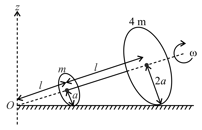State and prove principle of conservation of angular momentum. Explain it with examples.
Important Questions on Motion of System of Particles and Rigid Bodies
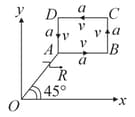
Which of the following statements is false for the angular momentum about the origin?
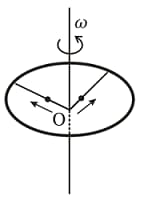
A thin rod of mass and length is suspended, at rest, from one end so that it can freely oscillate in the vertical plane. A particle of mass moving in a straight line with velocity hits the rod at its bottom most point and sticks to it (see figure). The angular speed (in ) of the rod immediately after the collision will be …………
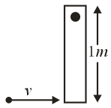
A particle of mass is on a smooth horizontal table and moves in a circular path of radius . The height of the table from the ground is . If the angular speed of the particle is , the magnitude of its angular momentum about a point on the ground right under the center of the circle is:
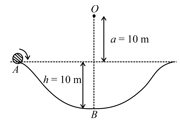
A cubical block of side is moving with velocity on a smooth horizontal surface. The surface has a bump at a point as shown in the figure. The angular velocity (in rad/s) of the block immediately after it hits the bump, is :

A rod of mass and length pivoted at one of its ends, is hanging vertically. A bullet of the same mass moving at speed strikes the rod horizontally at a distance from its pivoted end and gets embedded in it. The combined system now rotates with an angular speed about the pivot. The maximum angular speed is achieved for . Then
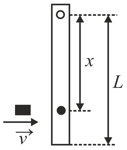
Four point masses, each of mass , are fixed at the corners of a square of side I. The square is rotating with angular frequency about an axis passing through one of the corners of the square and parallel to the diagonal, as shown in the figure. The angular momentum of the square about the axis is
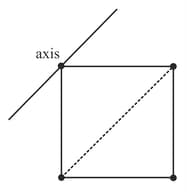
Two thin circular discs of mass and , having radii of and , respectively, are rigidly fixed by a massless, right rod of length through their center. This assembly is laid on a firm and flat surface, and set rolling without slipping on the surface so that the angular speed about the axis of the rod is . The angular momentum of the entire assembly about the point is (see the figure). Which of the following statement(s) is(are) true?
